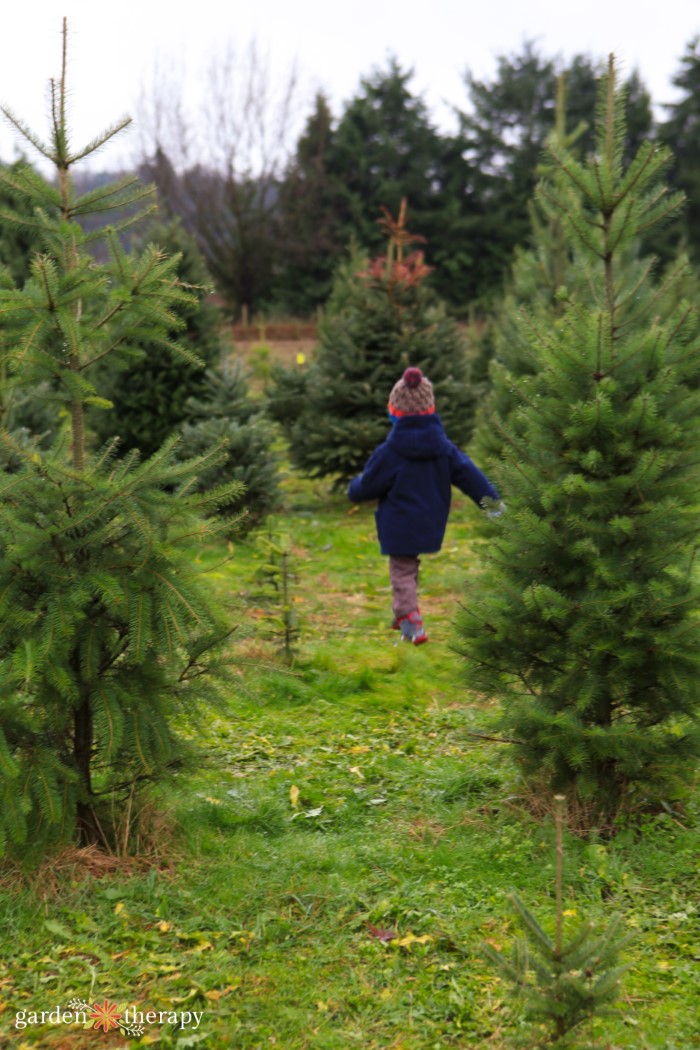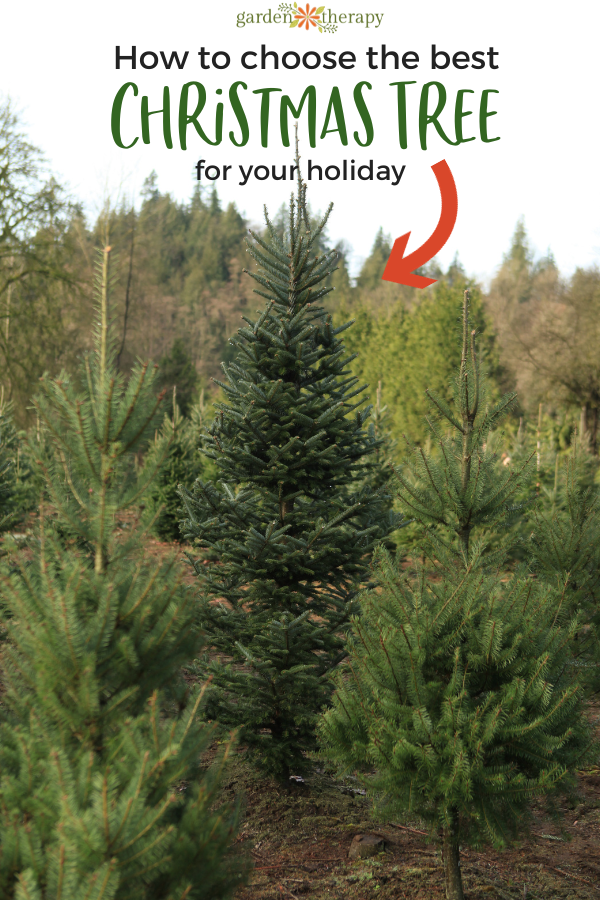If picking out a fresh Christmas tree is a yearly tradition for your family, make sure you get the right one! They all might look similar at first glance, but some are better suited for different reasons. Here are some of the best types of Christmas trees and how to pick the BEST one for your family.
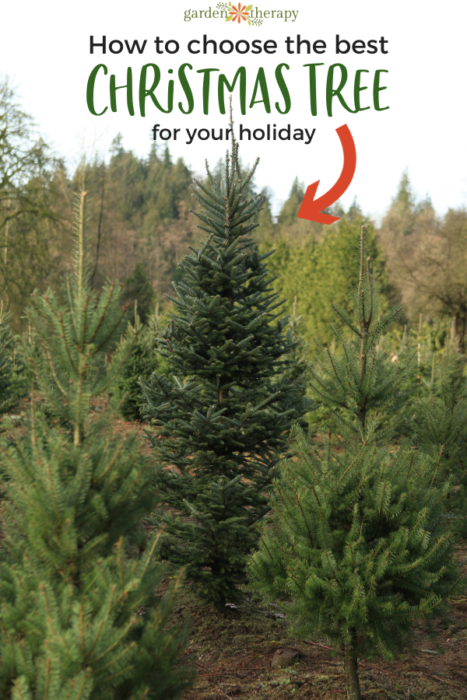
What makes the best Christmas tree? Having sold fresh-cut Christmas trees for many years, I can attest to the old adage that beauty is in the eye of the beholder.
In truth, your best type of Christmas tree may look vastly different from someone else’s. Size, shape, branch density, needle length, colour, and fragrance are some personal preferences that will play into the final decision.
For many of us, there is a specific tree species that just “smells like Christmas” because we grew up with that type.
But if you’re looking for the name of your favourite tree or want to experiment this year, here are some of the best types of Christmas trees to consider.
In this article, we will cover:
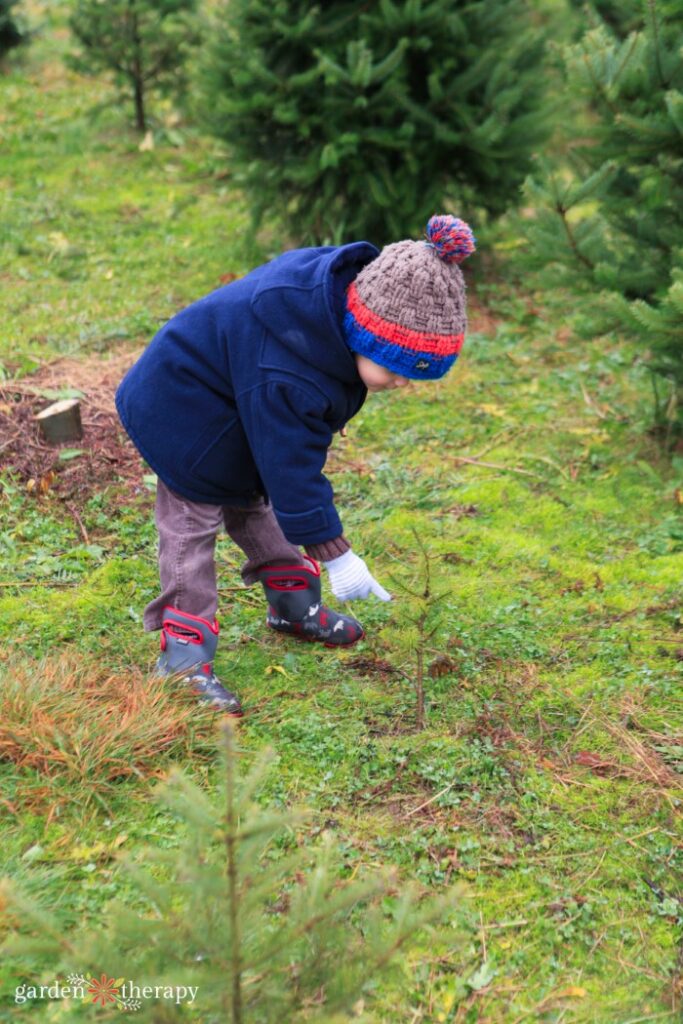
How to Pick the Best Type of Christmas Tree
Each tree species has certain characteristics that have made it popular. Whether it’s the rigidity of the branch tips, how well it retains its needles, or a striking fragrance, each variety has something special to offer.
Within a single species, pruning affects the overall shape and branch density: natural growth tends to be more open, frequent shearing leads to dense branches.
When looking at the different types of Christmas trees, you can keep a lookout for a few things:
- Fresh trees should not be losing many needles. You can test this by tapping the tree on the ground and seeing how many needles fall off. Alternatively, you can pull along a branch. Only a few needles should come loose.
- Sickness or decay. The tree should not smell musty or have any kind of spots. This could indicate that the tree was cut while sick or cut too long ago.
- Height and width. Measure your Christmas tree to ensure that it will fit inside your home. Bring along a measuring tape, and be sure to measure before you head to the Christmas tree lot, too.

The Different Types of Christmas Trees
There are many different types of trees that are commonly sold as Christmas trees.
While I don’t have pictures of all of them, I highly recommend you bring along with you a plant identification app in case the trees aren’t labelled. I have listed my favourite and most reliable apps here, to help you identify what types of Christmas trees you’re working with.
When you’re out shopping, keep an eye out for these names. Here are some of the best types of Christmas trees and what you need to know about each.
1. Fraser Fir
This is the most popular fresh Christmas tree in North America. They’re extremely hardy, and Canadian tree farmers ship them all over the world. Its needles are ½ to 1 inch long, dark green above and blue-green beneath. Needle retention is excellent, and the scent is pleasantly sweet and slightly pungent.
Fraser fir identifiers:
- More slender shape
- Slightly upturned branches
- Shorter needles ½ to 1 inch long
- Dark green needles with blue-green bottoms
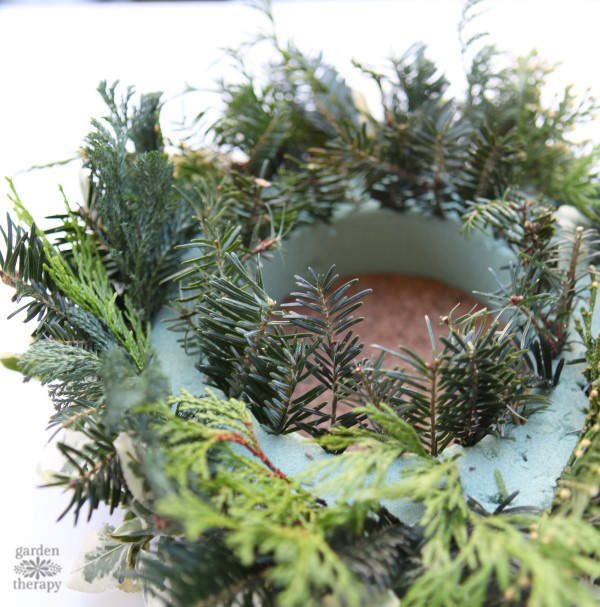
2. Noble Fir
The noble fir, with its rigid branches, is a fantastic choice for heavy ornaments. Its branches grow in whorls around the trunk, giving it a “tiered” effect. The upturned needles show both the medium-green surface colour and blue-green underside.
Noble fir identifiers:
- Blue-green needles with white bands on the side
- Pale grey to purplish bark
- Large upright pine cones
- Rigid branches
3. Douglas Fir
Don’t let the name fool you! A Douglas fir is actually a type of pine tree. Douglas fir is grown and shipped all over North America. The 1-1.5 inch dark green, soft needles radiate in all directions from the stem, giving it a full appearance. The needle retention is less than other trees, but it is also usually a less costly tree.
Douglas fir identifiers:
- Classic Christmas tree scent
- Heavier branches
- Dark green needles that point in all directions
- Softer needles compared to spruce
- Pointy, papery, reddish-brown buds

4. Balsam Fir
Needles are dark green, ¾ to 1.5 inches long, and last a long time. They’re easy to decorate but may not hold heavy ornaments well. The scent of the crushed needles is very pleasant, lasting throughout the holiday season. It’s one of the most popular options in Canada, being the top Christmas tree in Quebec and New Brunswick’s official tree.
Balsam fir identifiers:
- Flat needs with white bands on the underside
- Dark green needles
- Narrow and pointed crown
- Thin grey, smooth bark with resin blisters
5. Grand Fir
This type of tree is darker green with flat needles. It’s softer to the touch than other trees, so it’s pleasant to decorate!
Grand fir identifiers:
- Citrus-like scent
- Lighter branches
- Glossy green colour and curved boughs
- Flat needs with rounded ends
- Smooth bark with resin blisters and white spots
6. Nordman Fir
Nordman fir has longer needles than the noble or Fraser firs, giving it a softer look. The needles are deep, glossy green and have needle retention similar to that of both the noble and Fraser firs.
Nordman fir identifiers:
- Softer, glossy green needles with blunt tips
- Needles all around the branch
- Slightly longer needles
- Lack of a significant scent
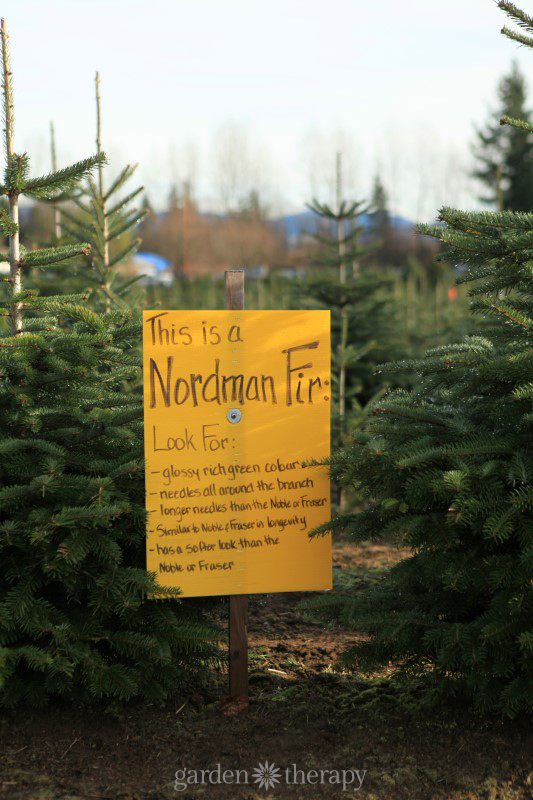
7. Colorado Blue Spruce
This popular option is a great choice for a living Christmas tree. In addition to the unique blue-green or gray-green foliage, it features a good shape and dense branches when young.
Colorado blue spruce identifiers:
- Blue-grey tinted needles with sharp points
- Dense foliage and pyramid-shape
- Branches are horizontal to the ground
- Smelly when you crush the needles
8. Scotch Pine
Scotch pine is the most heavily planted fresh Christmas tree variety. Its needles are 1-3 inches long and medium green, perfect for holding onto ornaments. Needle retention is excellent, even when it dries out.
Scotch pine identifiers:
- Medium-green needles
- Long needles (1-3 inches)
- Orange bark when mature
- Oval crown

9. Eastern White Pine
This tree has some of the longest needles in this listing, giving it a soft appearance. Needle retention is good. Because of its faint scent, this is a good choice for anyone sensitive to heavy fragrances.
Eastern white pine identifiers:
- Long blue-green needles
- Soft in appearance
- Needles curve at their ends
- Dark green smooth bark when young, and dark brown to black when older
Living Christmas Trees
Potted trees have become very popular because they can be planted in the landscape after serving their ornamental purpose indoors. Go for the type that fits your garden style.
I especially like lemon cypress trees, which is what I use to make my mini Grinch trees.
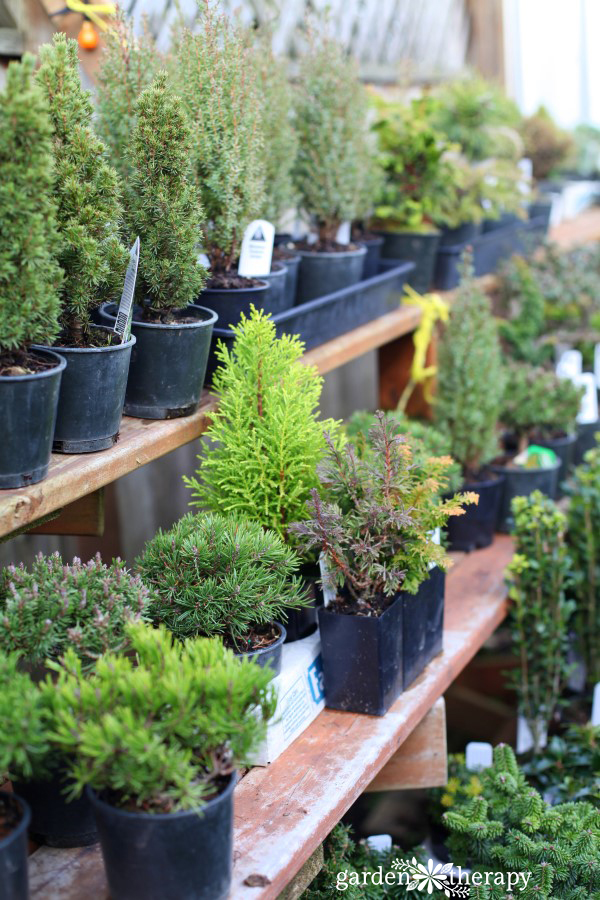
Frequently Asked Questions About Christmas Trees
Which type of Christmas tree is most popular?
The most popular types of Christmas trees are fir trees since they tend to shed fewer needles when they dry, all while maintaining scent and colour. While it varies significantly depending on where you live, Fraser fir and balsam fir are the most popular types of Christmas trees. Fraser fir is known for its longevity, while balsam fir is known for its classic Christmas tree scent and low price point.
What kind of tree is a Christmas tree?
Just about any evergreen tree can work as a Christmas tree. The Christmas tree tradition came from Pagans as they brought boughs of evergreens inside the home during the winter solstice to remind them of the green plants that would return in the spring. The first Christmas trees appeared in Germany in the 16th century, when Martin Luther brought a fir tree into his home to decorate.
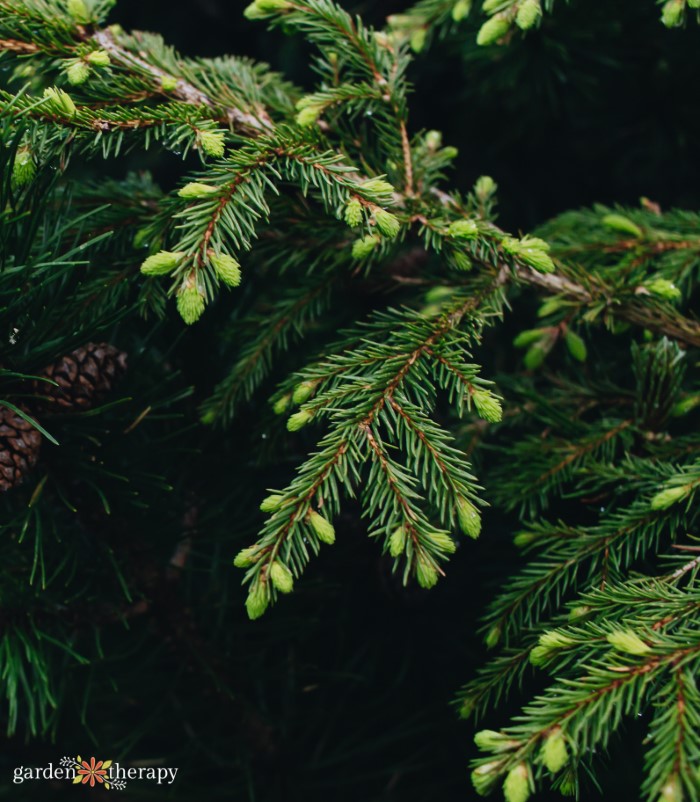
What is the Best Smelling Christmas Tree?
One of the best features of purchasing a real Christmas tree instead of a fake one is the scent. A balsam fir will give you the most scent, but they do tend to dry out more quickly than other trees. If this will be a concern for you, a Douglas fir or Fraser fir also has a scent and will last longer.
Which Christmas Tree Lasts the Longest?
Fraser fir will last you the longest, at about 5 weeks. If you like to buy your tree early, this one should still be looking good by Christmas time. A Douglas fir will also last quite a while at 4 weeks. Scotch pine also lasts for 3 weeks.
Yes, some varieties do better than others, but there’s more to it. When it comes down to a long-lasting Christmas tree, the results will mostly come from proper care. Learn more about Christmas tree care tips here!
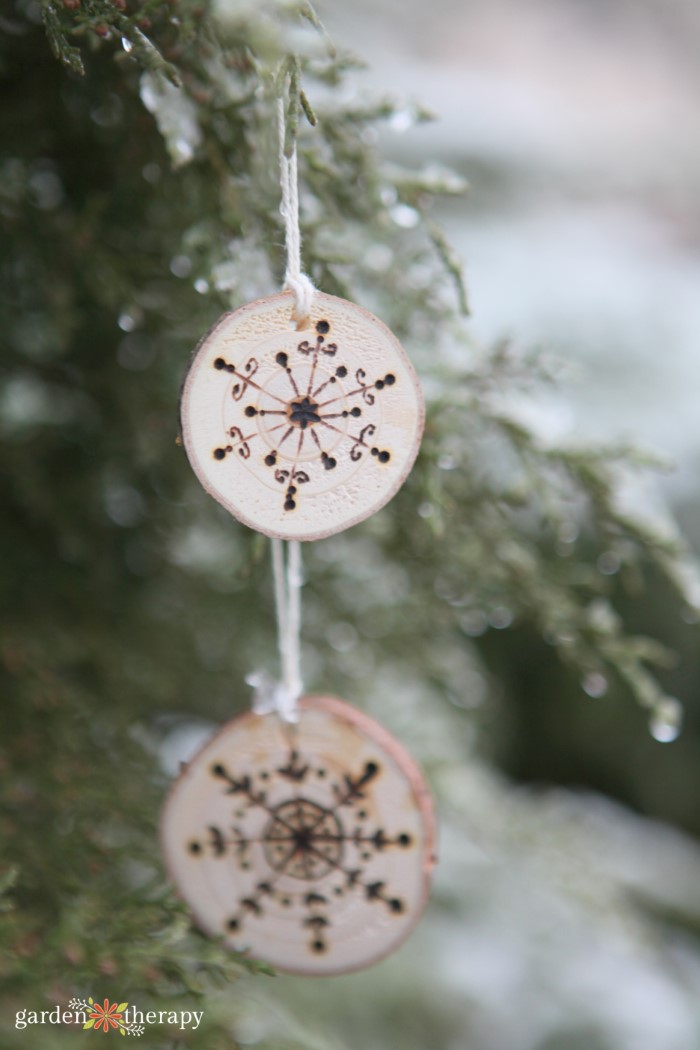
What are the Main Differences Between a Douglas Fir vs Fraser Fir?
Both the Douglas fir and Fraser fir can last a long time in the home and are some of the best Christmas trees. Fraser firs tend to be slender and work well in small rooms as their branches turn slightly upward. A Douglas fir will appear slightly bushier and wider.
Due to their soft needles, both trees can withstand the heat of being inside a home. Fraser fir has slightly shorter needles measuring ½ to 1 inch long while Douglas fir’s needles measure 1-1.5 inches. They have a similar dark green colour, though Douglas firs tend to have worse needle retention. Their lower price point reflects that.
What are the Main Differences Between a Grand Fir vs Douglas Fir?
Grand firs tend to be one of the most fragrant Christmas trees out there, evoking a citrus like scent. Douglas firs are also scented but bring the more classic Christmas tree scent you’re probably familiar with. Both trees have the classic cone shape, though grand firs are a little fuller.
The branches of a grand fir tend to be lighter and Douglas fir branches will hold heavier ornaments better. The needles of a Douglas fir are dark green, radiating in all directions. Grand fir needles come in a glossy green colour with a slight curve of the boughs.
Douglas firs tend to be more common due to their popularity, so you may have greater difficulty finding a grand fir. Douglas firs will last around 4 weeks while grand firs are only good for about 2 weeks before they begin dropping their needles.
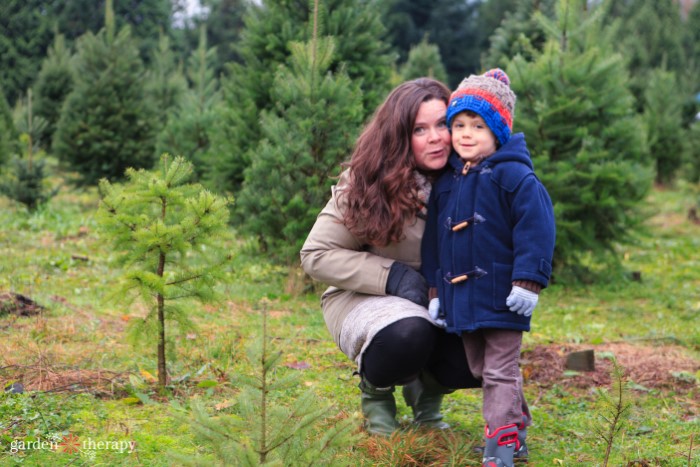
The most important thing to keep in mind while shopping for the best type of Christmas tree is that all-natural trees have slight physical imperfections. Some even contain bird nests or praying mantis egg sacks. Let these things serve as a reminder not to take decorating too seriously or obsess over minutia. Allow the natural beauty of the tree to take center stage for your holiday decor.
More Christmas Tree Inspiration
